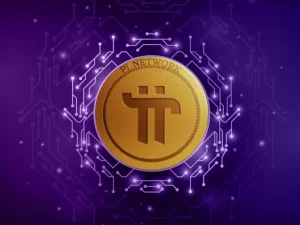Natural Gas Price Forecast& Price Prediction 2025-2030: What Will Gas Price Be in Next 5 Years?
Key Takeaways:
- By 2030, natural gas prices might slightly rise.
- Global demand and the energy shift have an impact on the market.
- Uncertainty is increased by renewables and policy changes.
- Volatility may be influenced by supply trends and geopolitics.
Through 2030, the natural gas industry is expected to undergo significant changes. The Henry Hub natural gas spot price is expected to average $4.20 per million British thermal units (MMBtu) in 2025 and increase to $4.50/MMBtu in 2026, according to the U.S. Energy Information Administration (EIA). Strong domestic consumption and increased demand for natural gas, especially from growing LNG export facilities, are the main causes of this increase.
Natural gas prices are expected to rise as a result of a predicted decrease in natural gas inventories. Market predictions of tighter supply-demand balances are reflected in the spike in natural gas contracts. Global gas prices may be impacted if there is less natural gas available for export due to infrastructural limitations and growing expenses.
According to the EIA, Henry Hub natural gas prices will gradually rise until they reach $4.60/MMBtu in 2026. These forecasts highlight how the natural gas market is changing due to variables including the production of power, storage capacity, and patterns in crude oil output.
| Year | Henry Hub Price (USD/MMBtu) |
|---|---|
| 2025 | $4.20 |
| 2026 | $4.50 |
| 2027 | $4.60 |
| 2028 | $4.70 |
| 2029 | $4.80 |
| 2030 | $4.90 |
Table of Contents
- Natural Gas Price History
- Natural Gas Technical Analysis
- Natural Gas Price Forecast 2025
- Conclusion
- FAQs
- How to Trade Crypto on BTCC?
- BTCC FAQs
Natural Gas Price History
There have been several periods in the history of natural gas price movement, each with its own set of circumstances and turning points. Take a closer look at this.
Natural gas prices remained relatively stable in the early 2000s, but they began to rise due to the growing demand for gas as an energy source. Unfortunately, prices would sometimes skyrocket due to insufficient infrastructure, illustrating how delicate the equilibrium was between supply and demand.
Hydraulic fracturing and horizontal drilling revolutionized the extraction of shale gas in the mid-2000s. As a result of this technical revolution, the production of dry natural gas increased significantly. This led to an immediate glut in the market, precipitating a precipitous drop in prices and necessitating a rethinking of energy policy and global natural gas consumption habits.
Natural gas prices were among the many things that took a knock during the 2008 financial crisis. Gas prices fell as a result of a decline in demand for energy caused by sluggish economies. However, gas consumption increased in tandem with the improvement in conditions, gradually driving prices back up.
Demand fluctuations, particularly during the cold winter heating season, caused short-lived price hikes for liquid natural gas (LNG) exports. Adding another level of complexity, the development of LNG export capability brought domestic pricing closer to the global gas markets.
Recent Geopolitical and Supply Chain Influences: Political events and supply chain concerns frequently tremble the natural gas world. An excellent illustration of this is the current crisis involving Russia and Ukraine. The market’s sensitivity to global events was demonstrated by the price spike caused by uncertainty. Because of this, many nations and businesses are reevaluating their energy sources.
/ You can claim a welcome reward of up to 10,055 USDT🎁\
Natural Gas Technical Analysis
Constantly shifting supply and demand as well as international economic conditions are the primary drivers of the anticipated volatility in natural gas prices. As a result of natural gas futures reacting to changes in weather patterns and oil prices, Henry Hub natural gas prices can see short-term volatility.
Although historical data indicates that volatility will persist, especially in the third and fourth quarters of 2025, the EIA predicts that gas prices could rise due to rising demand for LNG exports and possible tariffs.
Forecasts indicate a slow but steady increase in prices, in line with the five-year norm; however, substantial hikes may be curbed by cost pressures and uncertainties. The natural gas market will be impacted by ongoing trading and production trends, with winter weather having the potential to change price predictions.
Natural Gas Price Forecast 2025
| Analysts/Source | Natural Gas Price Forecast 2025
March |
Natural Gas Price Forecast 2025
July |
| ANZ Research | $14.1/MMbtu (Asia LNG) | Unchanged |
| ABN-Amro | €35-€40 | Unchanged |
| BMI | n/a | €38 |
| EIA | $2.96/MMBtu | $3.3/MMBtu |
| Fitch Ratings | Dutch TTF: $10/Mcf
Henry Hub: $3/Mcf |
Unchanged |
| ING | €29 | €30 |
| Trading Economics | $2/MMbtu | Dutch TTF:
1Q: €41.69/Mwh 2Q: €44.42/Mwh Henry Hub: 1Q: 2.7332 2Q: 2.8078 |
Natural gas price predictions for 2025 were all over the map, with some experts predicting even lower prices. Many others are optimistic that fuel prices will go up again in 2019.
Without providing a detailed prediction on the price of natural gas, Rizvi of Primary Vision Network stated:
In 2025, the price of natural gas will stay relatively stable. The world’s supply will be ensured by a new wave of LNG.
The spot price of Japanese LNG, according to ANZ Research’s natural gas price projection for 2025, will reach $14.1/MMbtu, up from $11.4 in 2024.
Dutch financial institutions ING, ABN-Amro, and BMI all predicted a decline in Dutch TTF for European gas.
In its weekly report dated June 27, BMI predicted that European gas prices will average €38/Mwh in 2025, a decrease from €40 predicted for 2024.
On July 16, ING predicted that the Dutch TTF price will fall from €30 in 2024 to €29 per megawatt-hour in 2025. In 2025, ABN-Amro anticipates that the price of Dutch TTF will fall from €40/Mwh in 2024 to €35 to €40/Mwh.
At the same time, Fitch Ratings kept its 2024 prediction that European gas prices will remain stable at $10/Mcf in 2025.
In a note dated June 17, Fitch Ratings stated:
All of our TTF base-case assumptions have been preserved. Gas storage in the European Union is 68% full, and we anticipate that member states will have ample time to restock before the heating season begins, reducing the likelihood of price increases. Nevertheless, we expect prices to rise in the fall, as is typical for natural gas prices.
The Swiss Federal Office of Energy reported that the European Union’s gas storage capacity was 83.4% full as of July 24. Gas prices in Europe were expected to stay high in 2025, according to Trading Economics. Quarter 2 of 2025 had a natural gas price increase from Q1’s average of €41.69/Mwh to Q2’s average of €44.42/Mwh, according to the data provider.
Fitch Ratings predicted that Henry Hub will trade at $3/Mcf in 2025, up from $2.5/Mcf in 2024, reflecting an upward trend in US natural gas pricing going forward. “Gas output in the US still exceeds consumption, albeit the disparity has shrunk. We anticipate a decrease in production due to the stated curtailments. Fitch Ratings noted on June 17 that weather has a significant impact on natural gas pricing, especially in the near term.
After estimating $2.94/MMBtu in February, the Energy Information Administration (EIA) increased its 2025 US natural gas price forecast to $3.30 in July.
[TRADE_PLUGIN]BTCUSDT,ETHUSDT[/TRADE_PLUGIN]
Natural Gas Price Forecast for 2026-2030
| nalysts/Source | Natural Gas Price Forecast 2026-2030
March |
Natural Gas Price Forecast 2026-2030
July |
| Fitch Ratings (2026) | Dutch TTF
2026: $8/Mcf 2027: $7/Mcf Mid-cycle: $5/Mcf Henry Hub 2026: $3/Mcf 2027: $2.75/Mcf Mid-cycle: $2.75 |
Unchanged |
| ING | n/a | Dutch TTF: €28/Mwh |
| Osama Rizvi | Bullish |
Oil prices are expected to continue falling after 2025, according to analysts.
ING predicted that in 2026, the price of gas in Europe will drop from €29 in 2025 to €28 per megawatt-hour.
According to Fitch Ratings, the Dutch TTF price is expected to drop to $8/Mcf in 2026, $7 in 2027, and $5/Mcf in the middle of the cycle. Henry Hub price was predicted by the rating agency to stay at $3/Mcf in 2026 from 2025, then drop to $2.75 in 2027. Forecasts indicated that $2.75/Mcf would be the mid-term stable price for Henry Hub.
New LNG production capacity from Qatar and the United States was blamed by Fitch Ratings for the fall in natural gas prices.
Because of all the variables involved, long-term predictions of natural gas prices are difficult. As a result, there is currently no way to reliably predict the price of natural gas in 2030.
The demand for renewable energy and coal, two additional fossil fuels, affects the consumption of natural gas.
China was one of several nations that had promised to eliminate coal use in the near future in order to meet its net-zero emission goals before the conflict in Ukraine broke out. Nevertheless, nations like China and Europe increased their coal consumption in 2022 due to the skyrocketing prices of natural gas.
Emerging markets in Asia will expand their imports of LNG due to natural gas’s growing importance in assisting the transition from fossil fuels to renewables, according to BMI. Over the next decade, the firm predicts that developed market imports of LNG would rise by 3.6% to 7 billion cubic meters, while emerging markets in Asia will see a 73% increase, reaching 118 billion cubic meters.
MI penned:
Natural gas is seen as a bridging fuel in Asia’s current energy transition, making the region relatively unique. The region’s governments are pushing for gas to play a larger part in their energy mixes, replacing coal in the power sector, oil in petrochemical production, increasing gas usage in domestic sectors, and promoting the growth of municipal gas markets, among other goals.
The possibility of fresh gas supplies is encouraging in the long run, according to Rizvi of Primary Vision Network.
According to his projections, new natural gas capacity of about 200 million tons is scheduled to be online during the next five years.
According to Rizvi, many developing and Asian nations would continue to rely on LNG as a means of ensuring their energy security during the energy transitions. What did he say?
Therefore, LNG isn’t going anywhere in my opinion. Staying in the picture is its intention.
Conclusion
The future looks bright for natural gas as a result of its favorable reputation as an environmentally friendly energy option and the possibility of an uptick in demand. Natural gas will play a larger and larger role in the global energy transition as we move toward more sustainable power sources. Because of its essential function in winter home heating and the expansion of gas pipelines, many experts predict a little increase in its pricing.
Given the current low price level, natural gas could be a good investment option for the long run, particularly if prices begin to rise in the next several months. Traders must conduct their due diligence and ensure that any moves align with their trading strategy and risk tolerance, as is the case with any investment. Always be abreast of the most recent developments in the energy market and natural gas production trends to make better selections.
FAQs
What is the outlook for natural gas going forward?
Natural gas is expected to rise moderately due to changing energy demands. According to the most recent research, experts anticipate price volatility in the following weeks.
What is the prediction for natural gas in the EU?
As the region moves toward renewables, energy efficiency, and emissions targets, lowering reliance on fossil fuel imports, the EU natural gas projection shows declining demand.
What prospects does natural gas have in 2025?
The demand for natural gas is expected to rise in 2025 due to rising exports and domestic consumption, while pricing may be impacted by supply shortages and market instability.
In 2025, will the price of natural gas rise or fall?
In 2025, natural gas prices are predicted to fluctuate, possibly declining due to robust supply growth but also seeing periods of increase due to weather and export demand.
Will the cost of natural gas increase over the next five years?
Over the next five years, natural gas values are expected to climb modestly due to changing energy market dynamics and rising worldwide demand.
What are the projected prices for natural gas in 2030?
It is anticipated that natural gas prices will rise moderately in 2030 due to market dynamics, energy transitions, and worldwide demand. The adoption of renewable energy, regulatory changes, and geopolitical events are some of the variables that analysts predict may cause variations.
How to Trade Crypto on BTCC?
This brief instruction will assist you in registering for and trading on the BTCC exchange.
Step 1: Register an account
The first step is to hit the “Sign Up” button on the BTCC website or app. Your email address and a strong password are all you need. After completing that, look for a verification email in your inbox. To activate your account, click the link in the email.

Step 2: Finish the KYC
The Know Your Customer (KYC) procedure is the next step after your account is operational. The main goal of this stage is to maintain compliance and security. You must upload identification, such as a passport or driver’s license. You’ll receive a confirmation email as soon as your documents are validated, so don’t worry—it’s a quick process.

Step 3. Deposit Funds
After that, adding money to your account is simple. BTCC provides a range of payment options, such as credit cards and bank transfers. To get your money into your trading account, simply choose what works best for you, enter the amount, and then follow the instructions.
Fiat Deposit. Buy USDT using Visa/Mastercard (KYC required).
Crypto Deposit. Transfer crypto from another platform or wallet.

Step 4. Start Trading
If you wish to follow profitable traders, you might go for copy trading, futures, or spot trading. After choosing your order type and the cryptocurrency you wish to trade, press the buy or sell button. Managing your portfolio and keeping track of your trades is made simple by the user-friendly interface.

Look more for details: How to Trade Crypto Futures Contracts on BTCC
BTCC FAQs
Is BTCC safe?
Based on its track record since 2011, BTCC has established itself as a secure cryptocurrency exchange. There have been no reports of fraudulent activity involving user accounts or the platform’s infrastructure. By enforcing mandatory know-your-customer (KYC) and anti-money laundering (AML) procedures, the cryptocurrency trading platform gives consumers greater security. For operations like withdrawals, it also provides extra security features like two-factor authentication (2FA).
Is KYC Necessary for BTCC?
Indeed. Before using BTCC goods, users must finish the Know Your Customer (KYC) process. A facial recognition scan and legitimate identification documents must be submitted for this process. Usually, it is finished in a few minutes. This procedure has the benefit of strengthening the security of the exchange and satisfying legal requirements.
Because their accounts will have a lower daily withdrawal limit, those who do not finish their KYC are unable to make deposits. It should be noted that those who present a legitimate ID without a facial recognition scan will likewise have restricted withdrawal options.
Is There a Mobile App for BTCC?
Indeed. For users of iOS and Android, BTCC has a mobile app. The exchange’s website offers the mobile app for download. Since both the web version and the mobile app have the same features and capabilities, they are comparable.
Will I Have to Pay BTCC Trading Fees?
Indeed. BTCC levies a fee for trade, just like a lot of other centralised exchanges. Each user’s VIP level, which is unlocked according to their available money, determines the different costs. The BTCC website provides information on the charge rates.
Can I Access BTCC From the U.S?
You can, indeed. According to its website, BTCC has obtained a crypto license from the US Financial Crimes Enforcement Network (FinCEN), which enables the cryptocurrency exchange to provide its services to investors who are headquartered in the US.
According to BTCC’s User Agreement document, its goods are not allowed to be used in nations and organisations that have been sanctioned by the United States or other nations where it has a licence.
BTCC Guide:
How to Trade Crypto Futures Contracts on BTCC
BTCC Guide-How to Deposit Crypto on BTCC?
What is Crypto Futures Trading – Beginner’s Guide
What is Leverage in Cryptocurrency? How Can I Trade at 100X Leverage?
BTCC Review 2024: Best Crypto Futures Exchange
Crypto Buying Guides:
Crypto Prediction:
Ethereum (ETH) Price Prediction 2024, 2025, 2030 — Will ETH Reach $10,000?
Ethereum Price Prediction 2024, 2025, 2030: How High Can ETH Go in 2024?
Bitcoin (BTC) Price Prediction 2024, 2025, 2030 — Is BTC a Good Investment?
Ripple (XRP) Price Prediction 2024, 2025, 2030 — Will XRP Reach $1 After SEC Lawsuit?
Pi Coin Price Prediction 2024,2025,2030 — Is Pi Coin a Good Buy?
Pepe (PEPE) Price Prediction 2024, 2025, 2030 – Will PEPE Reach $1










